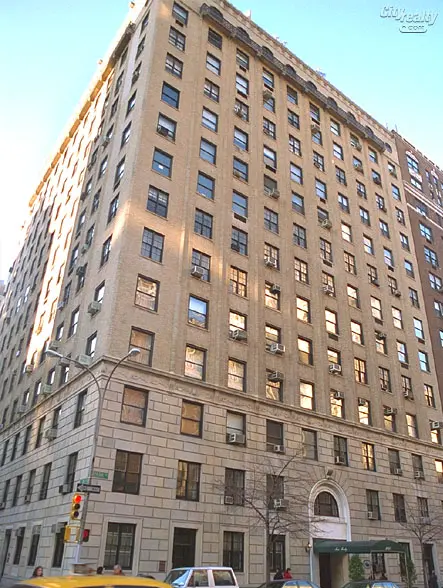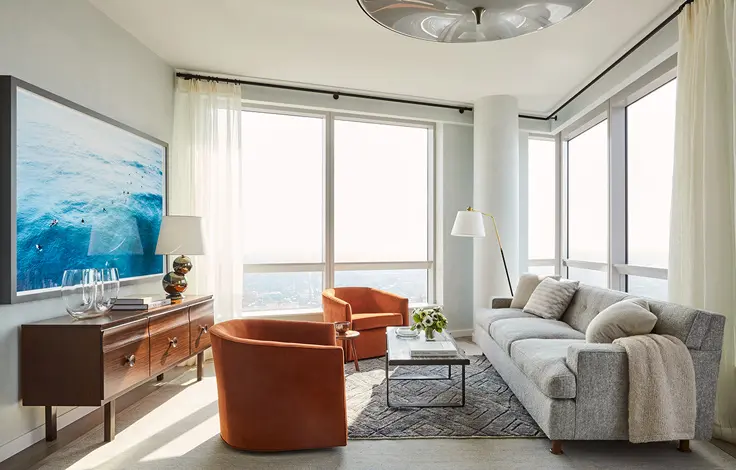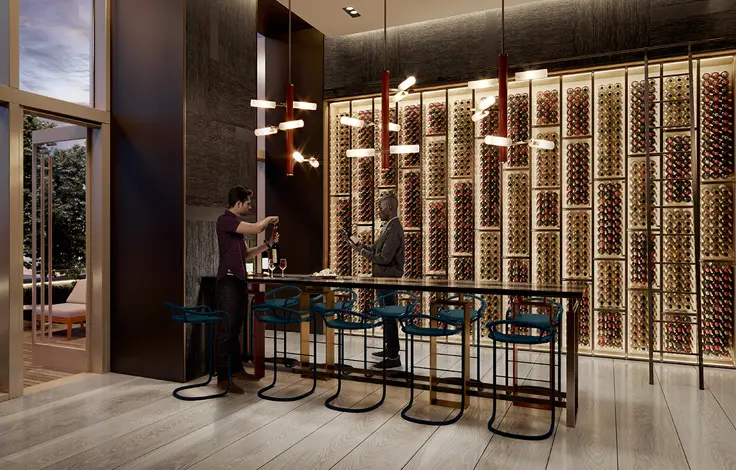1040 Park Avenue: Review and Ratings
at The Northwest corner of Park Avenue View Full Building Profile


This cooperative apartment house at 1040 Park Avenue on the northwest corner at 86th Street is known for its penthouse that was owned for many years by Condé Nast, the publisher, and its amusing decorative frieze of tortoises and hares.
The handsome but demure building, designed by Delano & Aldrich in a Georgian-style with some hints of Art Deco, was developed by Joseph L. B. Mayer.
It was built in 1924 and has 88 co-ooperative apartments.
Bottom Line
A handsome pre-war that originally had a legendary penthouse.
Description
In his November 7, 1993 “Streetscapes” column in The New York Times, Christopher Gray observed that “because you usually can’t do a whole lot with what are essentially packing cases for the rich, it is the rare apartment house that has anything approaching inspiration, and 1040 Park is one of these.”
“The architects gave it a chase limestone base of three floors and an amusing third-story frieze of tortoise-and-hare figures,” he explained, adding that “at the top is an inventive attic story with an elegant iron balcony of anthemion pattern” and the top story also has “rounded windows” and “the building has no cornice, just a frieze of triglyphs.”
“Before the current cleaning,” Mr. Gray continued, “the middle section was a puzzle, apparently bare of any detailing except regular piers of brick laid at a 45-degree angle to form a vertical ridge. The bottom and the top are elegant and clever, but the middle has seemed like the architects had simply gone out to lunch….Years of grime had concealed a sophisticated pattern of brickwork that is only now apparent,. Two soldier courses of brick on each side of the windows shoot straight up. They are very slightly differentiated in color and texture from the rest of the buff façade. Underneath each window is a panel of brick laid end-on. On the cleaned areas there is some sense of composition to the middle section, which now appears as a giant vertical element founded by the top and bottom sections. It’s a neat trick with some proto-Art Deco feeling, advanced for a period when the standard Renaissance form still held sway. If you have observed 1040 Park for any length of time, what you have missed will astonish you. The cleaning has also brought out a curious little band of inverted spade-shapes above the animal motif.”
Amenities
The building has a doorman, a concierge, a live-in superintendent and a gym. It permits pets.
Apartments
Apartment 9E is a two-bedroom unit that has a 12-foot-wide entry foyer that leads to the 25-foot-long living room with wood-burning fireplace, the 17-foot-long library and the 16-foot-long dining room next to the windowed, 18-foot-wide eat-in kitchen.
Apartment 9F is a five-bedroom duplex with a 21-foot-wide entrance gallery that leads to a 26-foot-long living room with a fireplace, a 15-foot-wide library and a 19-foot-wide dining room next to a 15-foot-long angled kitchen and a long hall that leads to a staircase to the lower level which has a 24-foot-long family room and one of the five bedrooms.
Apartment 2F is a one-bedroom unit that has a 21-foot-long entrance gallery that leads to a 26-foot-long living room with a fireplace, a 15-foot-long library and an 18-foot-long dining room next to a 16-foot-long, enclosed kitchen and an angled laundry.
Apartment 4GI is a one-bedroom unit with a 15-foot-long living/dining room next to the enclosed kitchen.
History
The penthouse was not the first in the city. Top floors were often allocated previously for servants' quarters, and sometimes for laundry equipment. "Although steam dryers had been introduced early in the century, many people preferred to dry their wash in the sun; tenants in some buildings were allotted specific days of the week when they could have their maids use the rooftop laundry (if it rained, tough luck)," observed James Trager in his book, "Park Avenue, Street of Dreams," Atheneum, 1990.
The penthouse in this building, however, was the first to be widely popularized.
In his November 5, 2000 “Streetscapes” column in The New York Times, Christopher Gray noted that Condé Nast in 1909 bought “an obscure fashion and society journal with modest circulation but a good name – Vogue,” adding that “with his college buddy, Frank Crowninshield, Nast remade vogue into a high-ticket journal sought after by advertisers.”
“Creating a triumvirate of Vogue, Vanity Fair and House and Garden, Nast emphasized quality printing on flatbed presses and the highest artistic and literary standards. Jean Cocteau, Aldous Huxley, Pablo Picasso, Paul Robeson, Cecil Beaton and the photographers Edward Steichen and Charles Sheeler were typical of the people who worked for or were portrayed by Condé Nast Publications,” Mr. Gray wrote.
Mr. Nast arranged to have the top floor of 1040 Park Avenue, “originally designated as servants’ rooms – redesigned to accommodate one of the most astonishing apartments up to that time,” Mr. Gray continued. Combined as a duplex with the six-bedroom c9rner apartment directly below the upper level sprawled over 5,000 square feet, with kitchen and service spaces but also a dining room, drawing room, library and, in the center, a 23-by-43-foot salon and ballroom.”
After he moved in, Mr. Nast had a “house-warning” to which he invited Fred and Adele Astaire, George Gershwin, Alfred Lunt and Lynn Fontaine and Edna St. Vincent Millay. Although the crash of 1929 wiped him out, he held onto the apartment and in 1941 gave a party for Henry Luce, the publisher of Time Magazine, that was attended by Mrs. Cornelius Vanderbilt, John D. Rockefeller Jr., and Joseph Medill Patterson, the publisher of The Daily News.”
Mr. Gray noted that Mr. Nast died in 1942 and within a couple of years “the duplex connection was cut off, and the upper level was divided into six units.”
"It was certainly the most famous [penthouse] in its day, and remains a benchmark for architectural historians," noted Christopher Gray in a November 7, 1993, article on a cleaning of the building's façade in The New York Times.






 6sqft delivers the latest on real estate, architecture, and design, straight from New York City.
6sqft delivers the latest on real estate, architecture, and design, straight from New York City.
